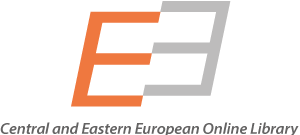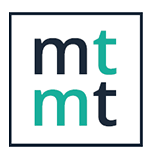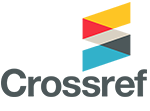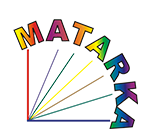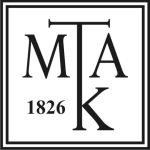A kormányzati platformok átláthatóságának alanyi köréről
DOI:
https://doi.org/10.47272/KIKPhD.2022.1.2Kulcsszavak:
átláthatóság, kormányzati platformok, közigazgatásAbsztrakt
A világ éppen átesett egy olyan pandémiával érintett helyzeten, ahol a fizikai kapcsolattartás hiánya és az évtizedek óta zajló infokommunikációs fejlődési folyamat eredményeképpen felértékelődött az elektronikus kapcsolattartás és a digitalizált folyamatok állam és polgárai között. E milliőben igazán aktuálisnak tekinthető annak vizsgálata, hogy az ennek biztosítására szolgáló kormányzati platformok miként teljesítik az irányukba mutatkozó elvárásokat. A tanulmány egy speciális témakört ragad meg ebből: azt járja körbe, hogy a kormányzati platformok tekintetében mutatkozó átláthatósági elvárások és követelmények tekintetében kit tekinthetünk alanynak, s ez miként befolyásolja az irányadó követelmények rendszerét az átláthatósági vonatkozások tekintetében.
Letöltések
Hivatkozások
Balázs, I.: Paraállami formák a mai magyar közigazgatásban. Tér és Társadalom, 13(3), 1999, 41. o. https://doi.org/10.17649/TET.13.3.529
Barta, A.: Közvetett közigazgatás és autonóm struktúrák a XXI. századi közigazgatásban. Budapest, Jogi Fórum, 2008. 13. o.
Barta, A.: Manifestations of Paraadministration in Hungarian Public Administration. Debrecen, University Of Debrecen, 2008, 3. o.
Bleiklie, I., et. al.: New public management, network governance and the university as a changing professional organization..In: Christensen, T. – Laegreid, P. (Szerk.): The Asgate Research Companion to New Public Management. Farnham, Ashgate, 2011. 161-176. o.
Bovaird, T.: Public governance: balancing stakeholder power in a network society. International review of administrative sciences, 71(2), 2005, 217-225. o. https://doi.org/10.1177/0020852305053881
Czapanskiy, K. S. – Manjoo, R.: The right of public participation in the law-making process and the role of legislature in the promotion of this right. Duke Journal of Comparative & International Law, 19(1), 2008, 1-10. o.
Darák, P. – Boros, A. (Szerk.): Az általános közigazgatási rendtartás szabályai. Budapest, Nemzeti Közszolgálati Egyetem, 2018. 50 o.
Fábián A. – Stankovics P.: A közigazgatási döntéshozatal támogatása elektronikus eszközökkel, különös tekintettel a hatósági eljárásra. Közigazgatástudomány, 2(1), 2022, 72–73. o.
Gajdics, Á.: Ügyféli jogok érvényesítése. In: Pánovics, A. – Glied, V. (Szerk.): Cselekedj lokálisan – Társadalmi részvétel környezeti ügyekben. Pécs, Publikon Kiadó, 2012. 172-173. o.
Glatz, F.: Kezdeményezőkészség, rendszeresség, folyamatosság, korrekcióképesség. Magyar Tudomány, 47(5), 2002, 536. o.
Hohmann, B.: A hatósági eljárás társadalmi ellenőrzésének lehetőségei. Pécs, Tudatosan a Környezetünkért Egyesület, 2018. 28-30. o.
Hohmann, B.: Az átláthatóság értelmezése és követelményrendszere a közigazgatási hatósági eljárások tükrében. Novissima, Pécs, 2022. 73-76. o.
Katsamunska, P.: Classical and modern approaches to public administration. Economic alternatives, 2012/1., 78-79. o.
Lodje, J.: Transparency and democratic legitimacy. JCMS: Journal of Common Market Studies, 32(3), 1994, 343-368. o. https://doi.org/10.1111/j.1468-5965.1994.tb00502.x
Park, H. – Blenkinsopp, J.: The roles of transparency and trust in the relationship between corruption and citizen satisfaction. International Review of Administrative Sciences, 77(2), 2011, 254-274. o. https://doi.org/10.1177/0020852311399230
Rowley, T. I. – Moldoveanu, M.: When will stakeholder groups act? An interest-and identity-based model of stakeholder group mobilization. Academy of management review, 28(2), 2003, 204-210. o. https://doi.org/10.2307/30040709
Ruijer, H. J. M.: Proactive transparency in the United States and the Netherlands: The role of government communication officials. The American Review of Public Administration, 47(3), 2017, 354-360. o. https://doi.org/10.1177/0275074016628176
Szőke, G. L. : Big Data and Algorithms in the Public Sector and Their Impact on the Transparency of Decision–Making. In: Hansen, H. et al. (Szerk.): Central and Eastern European e|Dem˛and e|Gov Days 2018: Conference Proceedings. Wien, Facultas Verlags– und Buchhandels AG, 2018. 301–311. o.
Vigoda, E.: From responsiveness to collaboration: Governance, citizens, and the next generation of public administration. Public Administration Review, 62(5), 2002, 529-530. o. https://doi.org/10.1111/1540-6210.00235
Voinov, A. – Bousquet, F.: Modelling with stakeholders. Environmental modelling & software, 25(11), 2010, 1268-1270. o. https://doi.org/10.1016/j.envsoft.2010.03.007
Wukich, C. – Mergel, I.: Closing the Citizen-Government Communication Gap: Content, Audience, and Network Analysis of Government Tweets. SSRN Electronic Journal, 2014, 1-5 o. https://doi.org/10.2139/ssrn.2488681
Ziller, J.: Les concepts d’administration directe, d’administration indirecte et de cooadministration et les fondements du droit administratif européen. In: Auby, J.-B. – Dutheil De La Rochére, J. (Szerk.): Droit Administratif Européen. Bruxelles, Bruylant, 2007. 235-244. o.
Downloads
Megjelent
Hogyan kell idézni
Folyóirat szám
Rovat
License
Copyright (c) 2023 Közigazgatási és Infokommunikációs Jogi PhD Tanulmányok

This work is licensed under a Creative Commons Attribution-NonCommercial-ShareAlike 4.0 International License.
A cikk felhasználási jogaira bármely harmadik fél számára az első közzétételt követően a Creative Commons Attribution-NonCommercial-ShareAlike 4.0 (CC-BY-NC-SA 4.0) licenc feltételek az irányadók.






